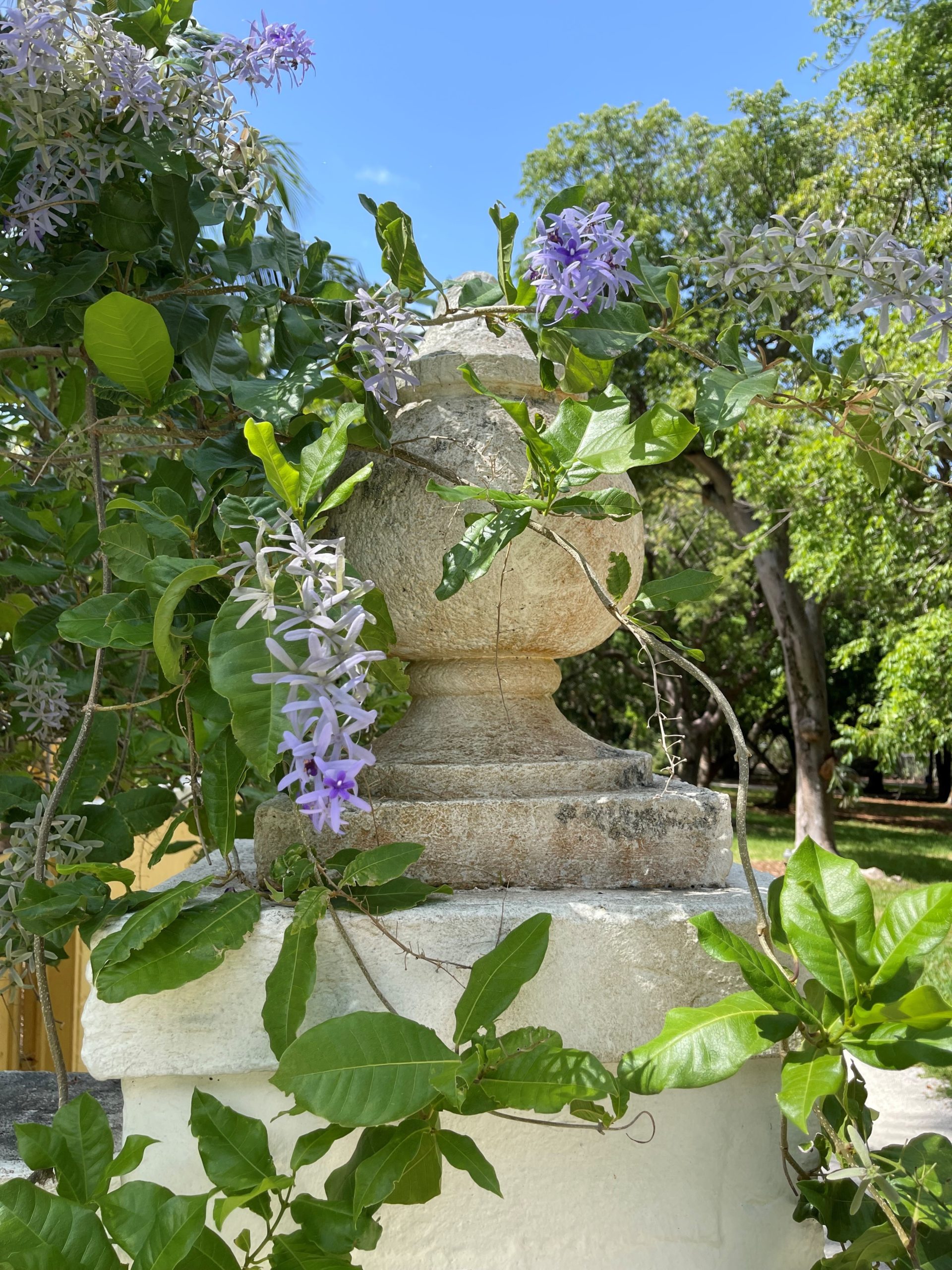
South Florida is truly a special place. With our warm climate throughout the year, we are lucky enough to always have a variety of beautiful plant species in bloom, regardless of the season. Here at Bonnet House, we have an abundance of tropical plant species blooming at different times of the year. Our guests have the opportunity to view and photograph some of the most beautiful plants in Florida. Located on our Bonnet House property, guests can find three different types of Mangrove trees, Coontie plants, Orchids, and so much more.
To help you plan your next visit, we have developed this guide featuring the various plant species you can find blooming at Bonnet House and around Fort Lauderdale in spring, summer, fall, and even winter.
Spring Blooms In South Florida
There are quite a few different types of flowers that bloom during springtime in South Florida.
1. Frangipani (Plumeria). Having been dormant in the winter months, the frangipani explodes with leaves and flowers in early spring. The frangipani tree is famous for its fragrant flowers that make up many of the leis offered to guests in the Hawaiian Islands. It is grown throughout the tropics and the flowers come in a variety of colors including white, yellow, pink, and red.
2. Mango trees (Mangifera indica). In the Bonnet House grove just west of the main house, Frederick Bartlett planted a long row of mango trees that bloom in the spring. The trees still produce hundreds of mangos each year that mature at the end of June.
3. Sea Grape trees (Coccoloba uvifera). The seagrape is a native tree that grows on the sand dunes along Florida’s coast. Its clustering white flowers produce bunches of green berries that turn purple in summer and are a favorite of many birds and small animals. It was considered a food source for early settlers in South Florida.
4. Blue porterweed (Stachytarpheta jamaicensis). A sprawling low growing wildflower, the blue porterweed is found on coastal dunes, shell mounds, and disturbed areas in South Florida. Its numerous small blue flowers are a nectar source for many butterfly species.
Summer Blooms In South Florida
Summertime in South Florida may be hot, but there are a variety of different plants that thrive in our hot, humid environment.
1. Mangrove trees. The red, black, and white mangrove trees along with green and silver buttonwood trees all inhabit the wetlands near the Intercoastal Canal boundary at the Bonnet House. They all flower in early summer. The red mangrove (Rhizophoramangle) produces its iconic pencil-shaped “propagule” that floats the local waterways looking for “land” to plant itself anew.
2. Wild coffee (Psychotria nervosa). This evergreen shrub has glossy leaves and numerous small white flowers. Its nectar is especially attractive to the Atala butterfly.
3. Saw palmetto (Serenoa repens). South Florida is known for its many native and nonnative palms. Each has its own unique bloom size and shape. Saw palmetto is a native fan palm found extensively in Florida. Its flowers are yellowish-wish and are produced in dense arching panicles up to two feet in length.
4. Petrea. This is a genus of evergreen flowering vines that have rough textured leaves hence the common name Sandpaper Vine. This plant was named Petrea in honor of Robert James Petre, 8th Baron of Petre of Ingatestone Hall in Essex, and patron of botany.
Fall Blooms In South Florida
October is typically the start of a drier, cooler season in Florida, so the plants that thrive during the autumn months differ a bit from the plants that do well during the spring and summer.
1. Bougainvillea. Less rain and cooler temperatures are the keys to triggering the blooming of Bougainvillea vines. The colorful leaf bracts (every color from white to purple) hide the small white flowers of these vines native to the far East. Just watch out for the sharp thorns!
2. Beach Sunflower (Helianthus debilis). A low-growing and sprawling plant with dark green leaves and flowers with bright yellow petals and a dark center, the beach sunflower is a native sand dune beauty throughout the fall and into winter.
3. Bushy Oxeye Daisy (Borrichia frutescens). Its silver-green leaves contrast with its yellow daisy flower. It is a perennial medium shrub and is native to the coastal sand dunes.
Winter Blooms In South Florida
While winter is typically a challenging time for growers in most of the country, there are many different types of flowers that bloom during our mild winters in South Florida.
1. Yesterday, Today, and Tomorrow (Brunfelsia pauciflora). Nothing says “winter” like the blooms of this showy Brazilian native. This good size shrub produces blooms that change color in just a few days. Dark lavender blooms turn lighter and then turn white in a matter of three days. It blooms throughout the winter months.
2. Vanda orchids. Throughout the property and displayed in the House, orchids of many genera bloom in a variety of colors, shapes, and profusions. Evelyn Barlett’s had an extensive collection of orchids, and many are still alive today. Her favorites were her Vandaswith large showy blooms in stunning bright colors.
3. Jatropha tree (Jatropha integerrima). The red flowers on the Jatropha trees brighten any visit to the Bonnet House regardless of the season. A native of Cuba, this medium-sized multi-trunked tropical evergreen has red flowers in abundance. Many butterfly species including the Zebra Longwing (Florida’s official butterfly) are attracted to the nectar.
Each season brings something new and special to Bonnet House, and our foliage is no exception. We hope that you plan on visiting Bonnet House Museum & Gardens during your next trip to South Florida. To learn more, and plan your visit, click here.
